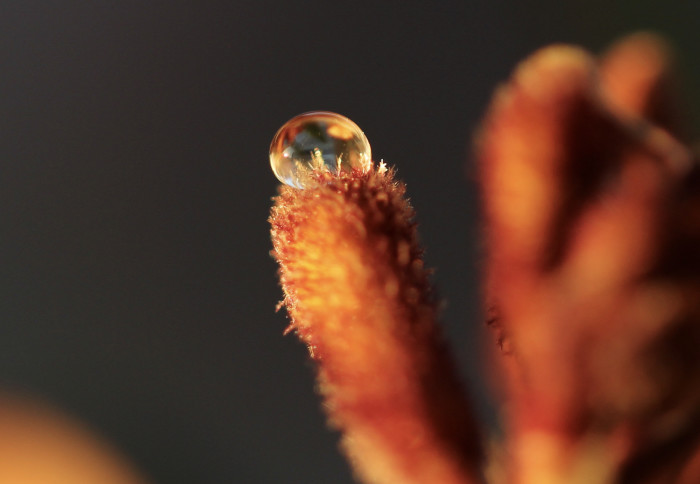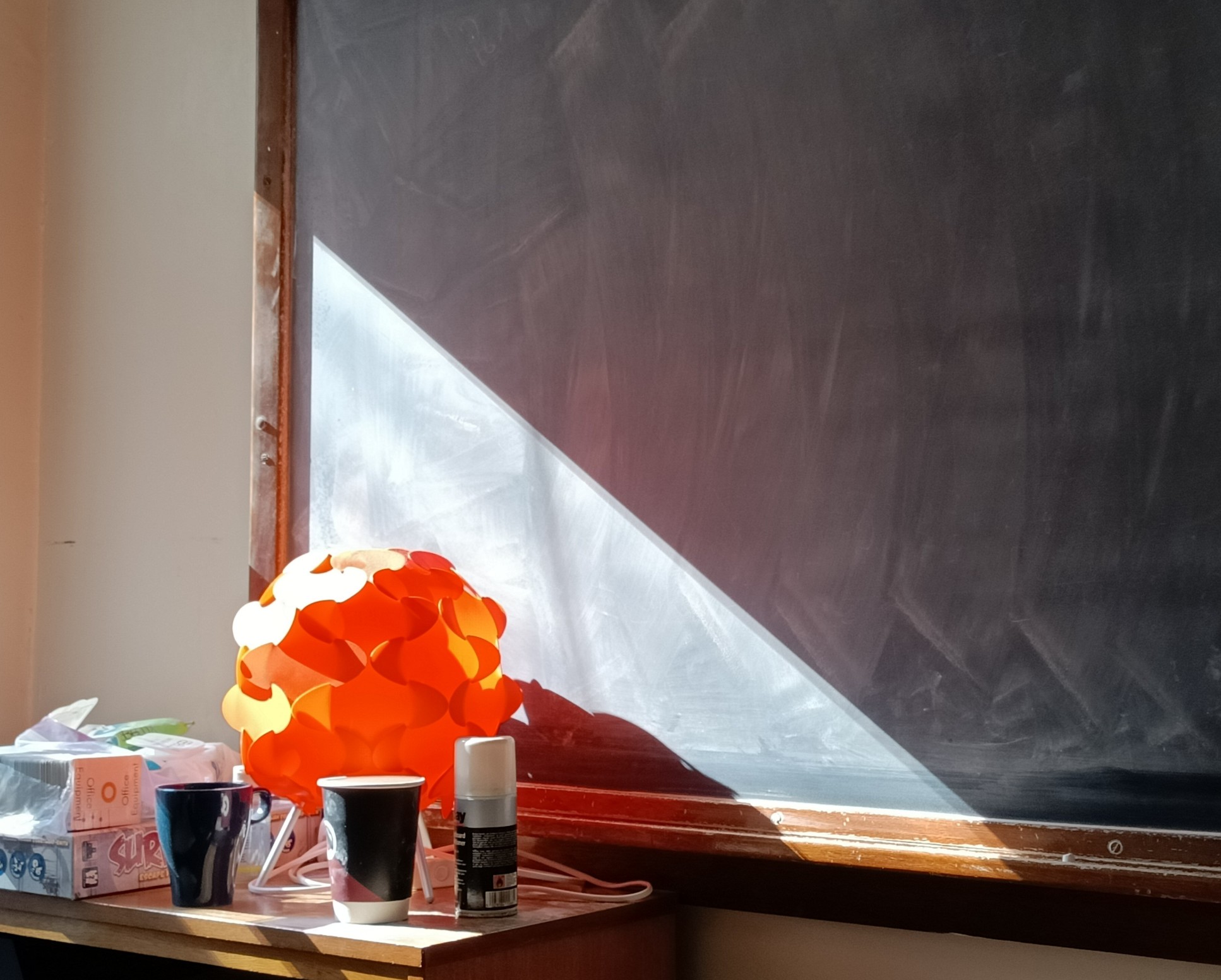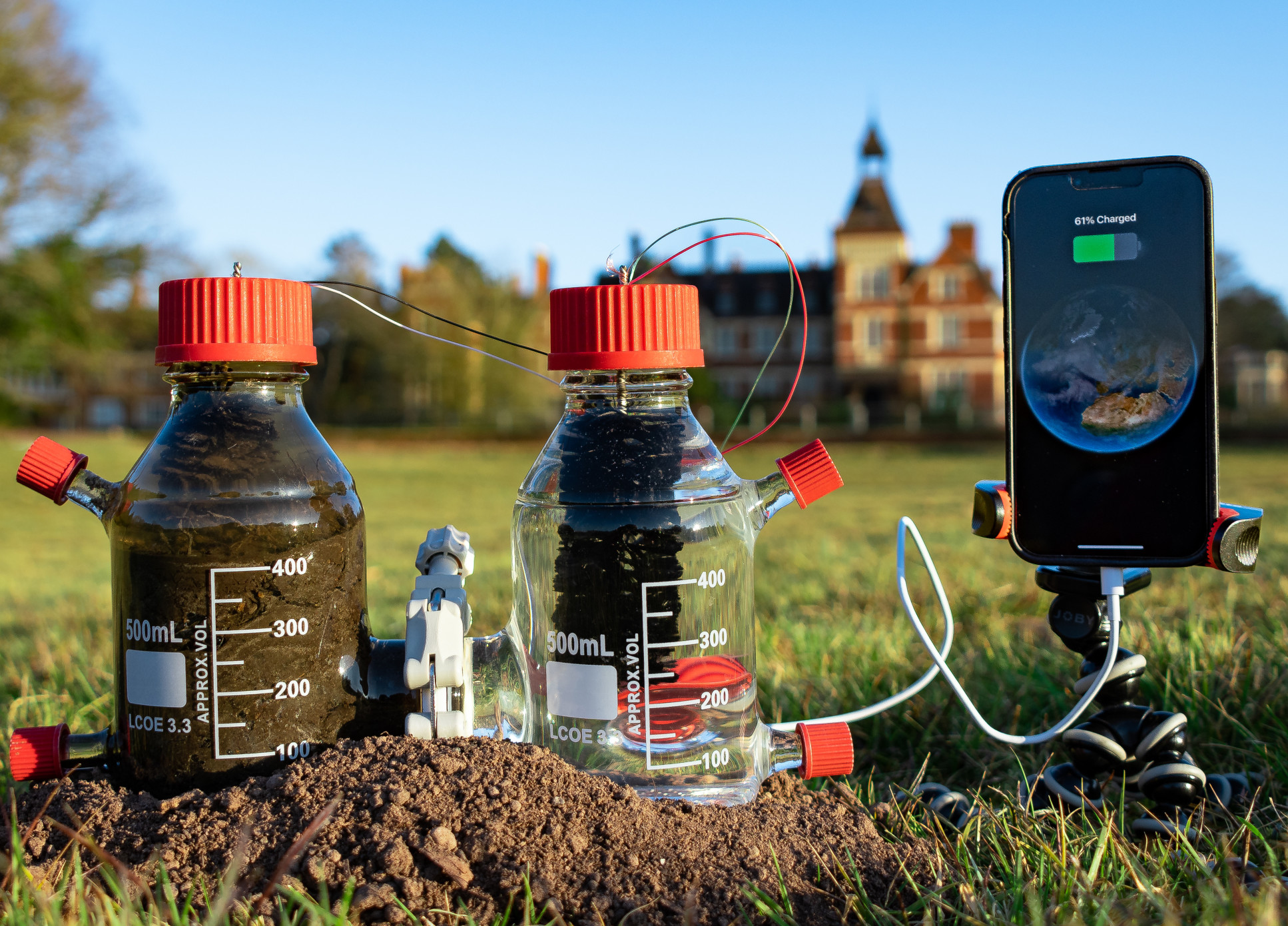

A photo of a water droplet balanced on a kangaroo paw plant, taken by mathematician Anna Curran, win the first place at an Imperial photo competition.
A close-up of a water droplet, resting on the velvety fuzz of a kangaroo paw plant, took first place at a photo competition for PhD students at Imperial, organised by the Faculty of Natural Sciences (FoNS).
Anna Curran, a second-year PhD student at the Department of Mathematics, took the winning snap, communicating her current research into hydrophobic surfaces – surfaces that repel water.
“Especially because I'm in the Maths department, it's very hard to find photographic examples of your research, but I think this competition is quite neat,” Curran says, “We’re such a technical university that it's very hard to explain to the outside world what's going on, whereas I’ve just been showing lots of people my image this week.”
We’re such a technical university that it's very hard to explain to the outside world what's going on..." Anna Curan PhD student, Mathematics
Curran has also been taking night classes in photography at Imperial. “Everything coincided rather nicely,” she says.
The FoNS PhD Student Photo Competition asked participants to communicate their research project using an image with an accompanying short caption, and was open to all PhD students in the Faculty.
Shortlisted entries were exhibited in the College main entrance on 20 March for the public and Imperial community to view. The entries can also be viewed on the competition website.
Prashant Garg, a first-year PhD student at the Imperial Business School, said that Sumer Jaitly’s entry – Light and Matter – was his favourite: “It makes science relevant to the broader public. [It asks,] ‘How can we see things through a scientific viewpoint?’”

“Whenever I go to a museum, I may see something beautiful, but then what? This is something that can helps me interpret things in a new sense,” Garg says.
Sumer Jaitly, from the Department of Physics, studies the fundamental theory of matter and forces.
Other FoNS Departments also took prizes at the exhibition. Holly Holder, from the Department of Physics, was runner-up with her photo of a nanomaterial, taken with a magnetic resonance microscope.
Her entry, titled Magnetic River Deltas, was not the only entry to not use a conventional camera. Shots of bacteria or cells submitted by other shortlisted candidates also used specialist laboratory imaging equipment.

Theo Hembury, from the Department of Life Sciences, won the People’s Choice Award, which attracted more than 600 votes over the course of a week. His photo shows a microbial fuel cell, charging a phone.

Taken at Silwood Park, Powering the Future, is one of many entries that addressed pressing issues in the next era, such as environmental sustainability, as well as disease and antibiotic resistance.
Liam Blyth, a PhD student in the Department of Physics, who works in atmospheric models of carbon monoxide, says: “It’s interesting because there’s a good mix from all the different departments. It’s a good cross-section of all the work that’s happening here.”
Article text (excluding photos or graphics) © Imperial College London.
Photos and graphics subject to third party copyright used with permission or © Imperial College London.
Reporter
Jacklin Kwan
Faculty of Natural Sciences



